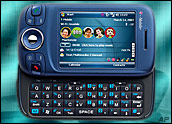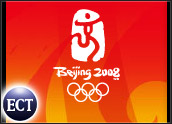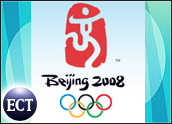
As our reliance on smartphones continues to grow, so does the fear of losing all the information they contain — and for good reason. Fierce competition among handset manufacturers and carriers has resulted in a chaotic, seemingly impenetrable jungle of incompatible makes and models with backup and recovery functionality that often proves complicated to use.
Though mobile device manufacturers typically build in data backup and restore applications into their wares, they are typically limited not just to the manufacturer or carrier but to a single model or even version of a single model. This has created opportunities for astute developers to cash in on the glaring need for mobile data backup, recovery and synchronization solutions across makes and models.
“Losing phone numbers and data during phone changes is an industry-wide problem. Up until the introduction of Backup-Pal, there hasn’t been a convenient enough solution for mainstream cell phone users to safeguard their data,” said Douglas Curtis, spokesperson for Advanced Wireless Solutions, which makes Backup-Pal, a hardware device that backs up mobile phones. “I suggest talking to the proprietor of any large cell phone shop about the horror stories they hear and how frequently they hear them. You’ll be surprised.”
Everyone Needs a Pal
There are some 255.8 million cellular subscribers in the U.S., estimates the wireless industry group CTIA, and only 2 percent use a software backup solution. Even fewer use hardware solutions, Curtis noted.
Backup-Pal’s engineers picked up on the fragmented nature of the cell phone backup software market while working on other hardware-based solutions for simplifying a task, he recounted. “They then began looking into a hardware-based solution that would be capable of solving the current challenges while being flexible enough to tackle new ones as the cellular industry developed them.”
Though it didn’t initially target smartphones, Backup-Pal’s engineers were led into doing so as they got more and more requests for smartphone-compatible software. Looking into the reasons behind the requests, the company discovered that not all smartphone users have computers and even the ones who did were looking for a simpler alternative.
“The backup solutions have been well-designed and implemented, but anyone who has spent four hours on the phone with tech support being walked through a restore can attest to it not being a simple solution,” Curtis told TechNewsWorld.
“The manufacturers of cellular phones have created an extremely chaotic landscape to traverse if you’re looking to create any kind of compatibility. Nearly every phone model seems to have been designed by a distinctly different team of people,” Curtis elaborated. “Carriers often request changes to a model, which creates models that look the same on the outside and are called the same but aren’t.”
Filling Needs
FutureDial started out manufacturing cell phone synchronization, backup and recovery software for original equipment manufacturers (OEMs) and individual wireless carriers. Perceiving a large latent demand, the company subsequently branched out and began offering SnapSync, its own branded cross-manufacturer, cross-carrier solution.
Initially offering its own line of Snap software and phone data cables, the advent of smarter phones and mobile phone number portability, which enabled users to switch models and carriers more easily, has led the company to develop an expanded version. The FutureDial Suite incorporates all the features and functionality of its three antecedents — SnapSync, SnapMedia and SnapDialer — as well as offer a greater range of compatibility.
“Loss of valuable info on the phone has been a constant problem ever since people started including more and more contacts and appointment information on their phones when they go on the road away from home or the office. Now, with the capabilities of many phones which can store music, photos, video and other premium content, loss of such information is even more frustrating and costly,” FutureDial’s Bruce Bunger told TechNewsWorld.
In addition to maintaining a direct B2B sales force that works directly with carriers to develop custom-made management solutions offered through retail outlets, warehouses and service centers, FutureDial is also doing a growing amount of B2C (business-to-consumer) business. Originally offering its own solutions through retailers such as RadioShack and Comp-USA, the company has switched over to selling the FutureDial software suite and data cables through its own Web site.
Handset Spaghetti
While many cell and smartphone manufacturers and wireless carriers provide a means for customers to back up or share data and content, they are often limited to particular phone models and manufacturers, Brunger noted.
“Every mobile phone manufacturer uses unique protocols, firmware and file structures in their handset models to store and use information, and sometimes this changes frequently even after a phone is launched on the market, with subsequent firmware updates, etc., and so that ‘secret sauce’ often differentiates even further between individual handset models within the same manufacturer — one model by Maker X may not have the same protocols, firmware or file structure as another model offered by Maker X,” he said.
“Then, try to multiply the task of being able to read and write information between the different handsets by the many hundreds of models which are available on the market nowadays — for example, making sure that you can read and write information between a Nokia, Samsung, Motorola phone or others. So as you can well appreciate, the effort to develop and maintain compatibility across thousands of different handset models in the market across many different handset manufacturers is a constantly moving target,” he added.
Some mobile device manufacturers build in “light” versions of backup programs that are lacking in features and functionality so that many users subsequently wind up buying full-featured versions of commercial backup and restore programs, added Nicholas Tsipanov, product manager for Spb Backup.
The Windows Mobile Market
Spb focuses on developing mobile backup solutions for Windows Mobile devices. Spb Backup is the biggest selling backup program for Windows Mobile devices in the world, according to Handango and Handster.
For the fourth year running, nearly 90 percent of respondents to the company’s annual customer survey said that they had “hard reset” their devices at least once, an action that necessitates them to first back up the data and content and then restore it once the reset had been completed.
“They do this for various reasons, such as problems with software and system instability, but hard reset may be performed accidentally,” Tsipanov elaborated. “Phone numbers and data can also be unintentionally deleted or altered, and backup software is designed to safeguard from the effects of that.”
Rather than moving with the herd and deciding that there would no longer be a need for full-featured backup and recovery software when Windows Mobile 5 — with persistent as opposed to RAM storage — was released in 2005, Spb took the chance on continuing to develop its mobile backup and recovery solutions. “We took our chances and won. By the time WM5 users realized that they are still losing data, Spb Backup was virtually the only functional Windows Mobile backup program on the market,” Tsipanov recounted.
Spb is optimistic about its mobile backup solutions’ future prospects. “We think that the demand for backup programs is not going to lessen — we are all human and we lose things. And even though mobile devices get more durable and smarter, there are always going to be such things as software and hardware conflicts, system cluttering and crashing, so we project that the need for backup programs is going to grow at the same pace the WM market does. According to Microsoft data, the WM market doubles each year. So we will keep working on making our Spb Backup better and better, even for new WM versions,” Tsipanov related.
Mobile in the Organization
“It’s not so much the cell phone dying versus it being lost or stolen that led us to offer backup and restore solutions,” Neil Book, president of SMobile Systems, told TechNewsWorld. “Thousands of devices are left in cabs, airplanes or are stolen every year, and many of these devices contain not only important address book information, but also sensitive company files.”
SMobile Systems approaches the mobile market from a business organization’s perspective. While manufacturers such as Nokia allow customers to upload and share a growing range of content, such as videos, as well as synchronization software, “there are some issues with relying on these solutions to properly back up your data,” Book explained.
“For starters, the solutions like these are not centrally managed, and in a business context, the company is relying on the users to actively backup their data. If you are using a backup service offered by SMobile, the company could enforce routine backups to a remote server. Secondly, the solutions offered by the device manufacturers are very specific to their devices. With SMobile you get a device agnostic solution that is centrally managed. We take care of the potential inefficiencies with out-the-box solutions,” he added.
Lacking a centrally a managed solution, users may not be doing a comprehensive backup, Book continued. “It’s not only important to back up the standard messages, contacts and calendar, but also the file system where important files are stored, removable media cards and applications. Basic sync solutions from manufacturers do not cover these areas.”




















































